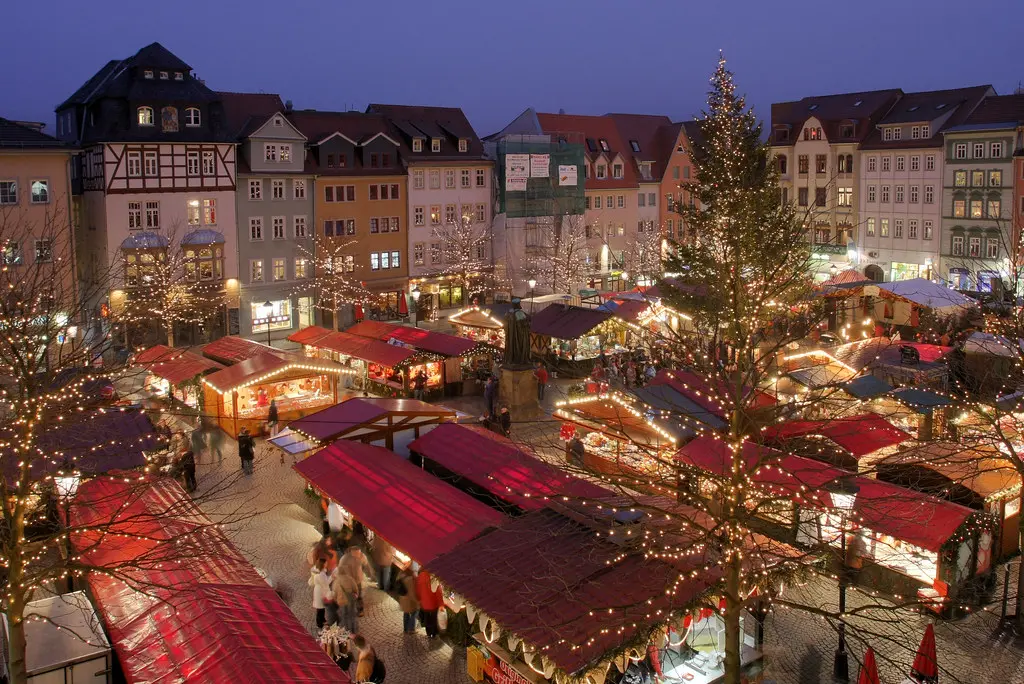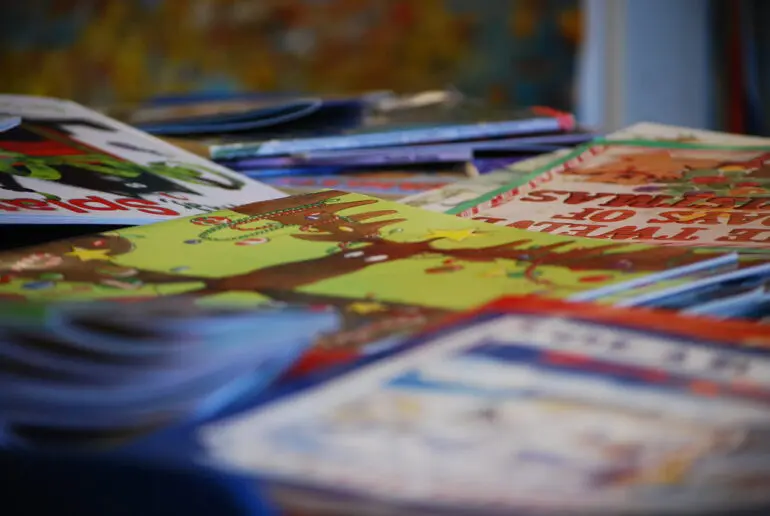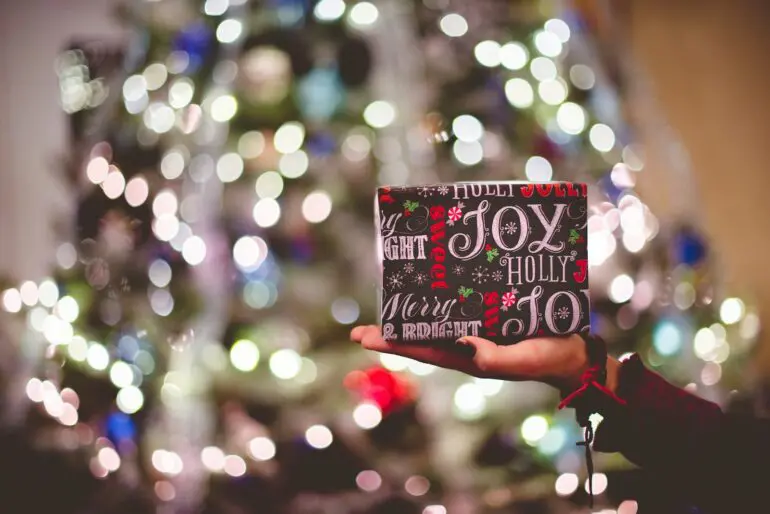Listeners:
Top listeners:
-
 play_arrow
play_arrow
Forever Christmas Radio
- home Home
- keyboard_arrow_right Celebrate Christmas
- keyboard_arrow_right Posts
- keyboard_arrow_rightThe Magic of Christmas Traditions Around the World

Christmas is a time of joy, family, and cherished traditions, but the way we celebrate this festive season varies wildly around the globe. Let’s take a sleigh ride around the world to explore some of the most unique and heartwarming Christmas traditions and see how different cultures bring their own special touch to this magical holiday.
Absolutely, I’ll continue with Finland and include Austria as well as a few more countries to enrich your post. Here’s the extended version:
Christmas Traditions Around the World
Philippines: In the Philippines, Christmas isn’t just a day—it’s a season! The festivities kick off with Simbang Gabi, a series of nine pre-dawn masses starting on December 16th. Imagine waking up before the sun, heading to church, and then enjoying a delicious breakfast of bibingka (rice cake) and puto bumbong (purple rice cake) from street vendors. Homes and streets glow with Parol, star-shaped lanterns symbolizing the Star of Bethlehem, adding a magical touch to the season.
Sweden: Sweden’s Christmas begins with a luminous celebration on St. Lucia’s Day, December 13th. The eldest daughter in each family dresses in white, wears a crown of candles, and serves coffee and lussekatter (saffron buns) to her family while singing traditional songs. It’s a beautiful sight, symbolizing light triumphing over the long Scandinavian winter nights. On Christmas Eve, Swedish families gather for a hearty meal of Julskinka (Christmas ham), pickled herring, and Jansson’s Temptation (a delicious potato and anchovy casserole).
Mexico: Mexico’s Christmas season is a vibrant fiesta with Las Posadas, a nine-day reenactment of Mary and Joseph’s search for lodging. Picture processions of children dressed as angels and shepherds visiting homes, singing carols, and asking for shelter. Each night ends with festive celebrations featuring food, piñatas, and fireworks. The final posada on Christmas Eve wraps up with a midnight mass and a feast of tamales and bacalao (salted cod). The Pastorelas, lively theatrical performances about the shepherds’ journey to see baby Jesus, add humor and modern twists to the celebrations.
Italy: Italy’s Christmas is steeped in tradition, with elaborate Presepe (Nativity scenes) taking center stage in homes and churches. On January 6th, Italians celebrate La Befana, a friendly witch who delivers gifts to children. Legend has it she was invited by the Magi to visit baby Jesus but declined, only to regret it later. Now she searches for the Christ child every year, leaving gifts for good kids along the way. Christmas Eve, or La Vigilia, features a grand seafood feast, including baccalà (salted cod) and panettone, a sweet bread loaf bursting with candied fruits and raisins.
Australia: In Australia, Christmas is a sun-soaked affair with barbecues on the beach. Imagine swapping snow for sand and enjoying prawns, ham, and pavlova (a meringue dessert topped with fresh fruit) by the ocean. A beloved event is Carols by Candlelight, where folks gather in parks to sing carols under the stars. Santa, or “Swag Man Santa,” might even show up on a surfboard or in a sleigh pulled by kangaroos!
Japan: Across the globe in Japan, Christmas isn’t a public holiday, but it’s still a time for celebration, especially for couples. Believe it or not, eating KFC on Christmas Eve is a big tradition here, thanks to a clever 1970s marketing campaign. Reservations for the special Christmas chicken meal are made weeks in advance! Cities also dazzle with stunning illuminations, turning urban areas into sparkling winter wonderlands perfect for holiday strolls.
Ethiopia: Ethiopia celebrates Christmas, or Ganna, on January 7th. The day starts with a church service at dawn, where worshippers dressed in white make their way to church, candles in hand. Afterward, families feast on wat (a spicy stew) and injera (a type of flatbread). A unique aspect of Ethiopian Christmas is the game of Ganna, a hockey-like sport played with curved sticks and a wooden ball, believed to have been played by shepherds attending Jesus’ birth.
Germany: Germany’s Christmas season is magical, starting with Advent and its beautiful calendars and wreaths. The country is famous for its Weihnachtsmärkte (Christmas markets), where charming stalls sell handmade crafts, ornaments, Lebkuchen (gingerbread), and Glühwein (mulled wine). St. Nicholas Day on December 6th brings small gifts and sweets for children. The main event is Christmas Eve, with families enjoying Weihnachtsgans (Christmas goose) and exchanging gifts around the tree.
Iceland: In Iceland, the mischievous Yule Lads or Jólasveinar visit children on the thirteen nights leading up to Christmas. Each night, a different Yule Lad leaves gifts in the shoes of well-behaved kids and potatoes for the naughty ones. Icelandic Christmas includes a meal of Hangikjöt (smoked lamb) and Laufabrauð (leaf bread), thin, crispy flatbreads with intricate patterns, adding a unique touch to the celebrations.
Brazil: In Brazil, Christmas, or Natal, is a vibrant affair. It starts with Missa do Galo, or Midnight Mass, on Christmas Eve, followed by a feast featuring Pernil (roast pork), Bacalhau (salted cod), and Rabanada (like French toast). In some regions, fireworks light up the sky. Santa Claus, or Papai Noel, makes his rounds, leaving gifts in shoes for eager children.
Poland: Poland’s Christmas Eve, or Wigilia, is a deeply symbolic and festive time. When the first star appears, families share opłatek (a wafer) and wishes for health and happiness. The meal features twelve meatless dishes, representing the apostles, including barszcz (beet soup), pierogi (dumplings), and karp (carp). An extra place is set for an unexpected guest, embodying Polish hospitality and the spirit of inclusion.
Russia: Russia’s Christmas on January 7th is preceded by Svyatki, a festive period until January 19th. Christmas Eve, or Sochel’nik, includes a meal with kutya (a porridge of wheat or rice, honey, and poppy seeds). Ded Moroz (Grandfather Frost) delivers gifts on New Year’s Eve with his granddaughter, Snegurochka (the Snow Maiden), adding a special charm to the festivities.
Norway: In Norway, Christmas features the nisse, a gnome-like creature who protects farms and brings gifts. Families leave out porridge for the nisse on Christmas Eve. Traditional foods include lutefisk (dried fish soaked in lye) and julekake (Christmas cake). Norwegians also enjoy pepperkaker (gingerbread cookies), making the season warm and delightful.
Kenya: Kenya’s Christmas is a vibrant celebration marked by joyous church services filled with singing, dancing, and nativity plays. Many Kenyans travel to rural areas to celebrate with extended family. The Christmas meal often features nyama choma (roast meat) and chapati. Community gatherings are common, with neighbors sharing food and exchanging gifts, fostering a strong sense of community.
Ukraine: In Ukraine, Christmas Eve, or Sviat Vechir, is a night of family and tradition. The Sviata Vecheria meal includes twelve dishes, one for each apostle, and begins with the first star’s appearance. Kutia, a dish of wheat berries, honey, and poppy seeds, is a staple. The evening includes caroling and midnight church services, with straw under the tablecloth symbolizing the manger where Jesus was born.
South Africa: In South Africa, Christmas means summer fun with outdoor braais (barbecues) featuring grilled meats and malva pudding (a sweet dessert). Carols by Candlelight events bring communities together to sing under the stars. Homes are decorated with Christmas trees and lights, and Father Christmas delivers gifts to excited children.
France: In France, Christmas is a gourmet affair with Réveillon, a late-night feast on Christmas Eve. Families indulge in luxurious dishes like foie gras, oysters, and bûche de Noël (Yule log cake). French children leave their shoes by the fireplace for Père Noël to fill with gifts.
Netherlands: In the Netherlands, Sinterklaas arrives on December 5th, bringing gifts and candy. Children leave out shoes filled with hay and carrots for Sinterklaas’s horse, and in return, they find them filled with sweets and small presents the next morning. The Dutch also enjoy oliebollen, delicious deep-fried doughnuts, during the festive season.
Venezuela: In Venezuela, the streets come alive with patinatas, where people roller skate to early morning church services. The air is filled with the sounds of fireworks and traditional music, creating a lively atmosphere. Venezuelan families gather for a festive meal that includes hallacas (cornmeal pies filled with meat, olives, and raisins), pan de jamón (ham bread), and dulce de lechoza (papaya dessert).
Hungary: In Hungary, Christmas Eve is celebrated with a festive mealthat includes fish soup, stuffed cabbage, and “bejgli” (a sweet pastry filled with poppy seeds or walnuts). Hungarian children look forward to the visit of “Jézuska” (Baby Jesus), who brings gifts and places them under the Christmas tree. In Croatia, Christmas preparations begin with the planting of wheat seeds on St. Lucy’s Day, December 13th, symbolizing new life and prosperity. The Christmas Eve meal is traditionally meatless and includes dishes like “bakalar” (dried cod) and “sarma” (cabbage rolls). Croatian families also enjoy “fritule,” small doughnuts dusted with powdered sugar.
Czech Republic: In the Czech Republic, Christmas Eve dinner includes carp and potato salad. A popular tradition is the placing of a fish scale under the plate for good luck and prosperity. After dinner, families gather around the Christmas tree to exchange gifts brought by “Ježíšek” (Little Jesus). The evening often includes a visit to midnight mass. In Portugal, the highlight of the Christmas feast is “bacalhau” (salted cod) served with boiled potatoes and cabbage. Portuguese families also enjoy “bolo-rei” (king cake), a fruitcake with a hidden charm and a bean. The person who finds the charm is expected to buy the cake the following year, while the one who finds the bean must bake it.
Austria: In Austria, the festive season is marked by the arrival of “Krampus,” a fearsome creature who accompanies St. Nicholas to punish naughty children. Christmas markets, or “Christkindlmarkts,” are a highlight, offering mulled wine, roasted chestnuts, and handmade crafts. On Christmas Eve, Austrian families gather for a meal that often includes “Weihnachtskarpfen” (Christmas carp). The evening ends with the singing of “Silent Night,” a carol that originated in Austria. In Greece, Christmas is a time for family and faith. Greek homes are adorned with basil-wrapped crosses to ward off evil spirits. The Christmas meal includes dishes like “christopsomo” (Christ bread), roast lamb, and “melomakarona” (honey cookies). On January 1st, Greeks celebrate St. Basil’s Day with the cutting of a “vasilopita” (a cake with a hidden coin), bringing luck to the person who finds it.
Finland: In Finland, Christmas Eve is a solemn and reflective time. Families visit cemeteries to light candles on the graves of loved ones, creating a sea of lights. The main meal features “rosolli” (beetroot salad), “kinkku” (Christmas ham), and “riisipuuro” (rice porridge), which is served with an almond hidden inside for good
Venezuela: In Venezuela, the streets come alive with “patinatas,” where people roller skate to early morning church services. The air is filled with the sounds of fireworks and traditional music, creating a lively atmosphere. Venezuelan families gather for a festive meal that includes “hallacas” (cornmeal pies filled with meat, olives, and raisins), “pan de jamón” (ham bread), and “dulce de lechoza” (papaya dessert).
Hungary: In Hungary, Christmas Eve is celebrated with a festive mealthat includes fish soup, stuffed cabbage, and “bejgli” (a sweet pastry filled with poppy seeds or walnuts). Hungarian children look forward to the visit of “Jézuska” (Baby Jesus), who brings gifts and places them under the Christmas tree.
Croatia: In Croatia, Christmas preparations begin with the planting of wheat seeds on St. Lucy’s Day, December 13th, symbolizing new life and prosperity. The Christmas Eve meal is traditionally meatless and includes dishes like “bakalar” (dried cod) and “sarma” (cabbage rolls). Croatian families also enjoy “fritule,” small doughnuts dusted with powdered sugar.
These diverse Christmas traditions showcase the unique ways in which cultures around the world celebrate this festive season. Each tradition adds a special flavor to the holiday, embodying the spirit of joy, community, and shared heritage. Merry Christmas to all, and may your holidays be filled with love and laughter!
Written by: FC Team
Similar posts
TV and Movie Schedule
Polls
 Loading ...
Loading ...

Thank you for your loyal listenership


FCR is a Candian stream, licensed by SOCAN





